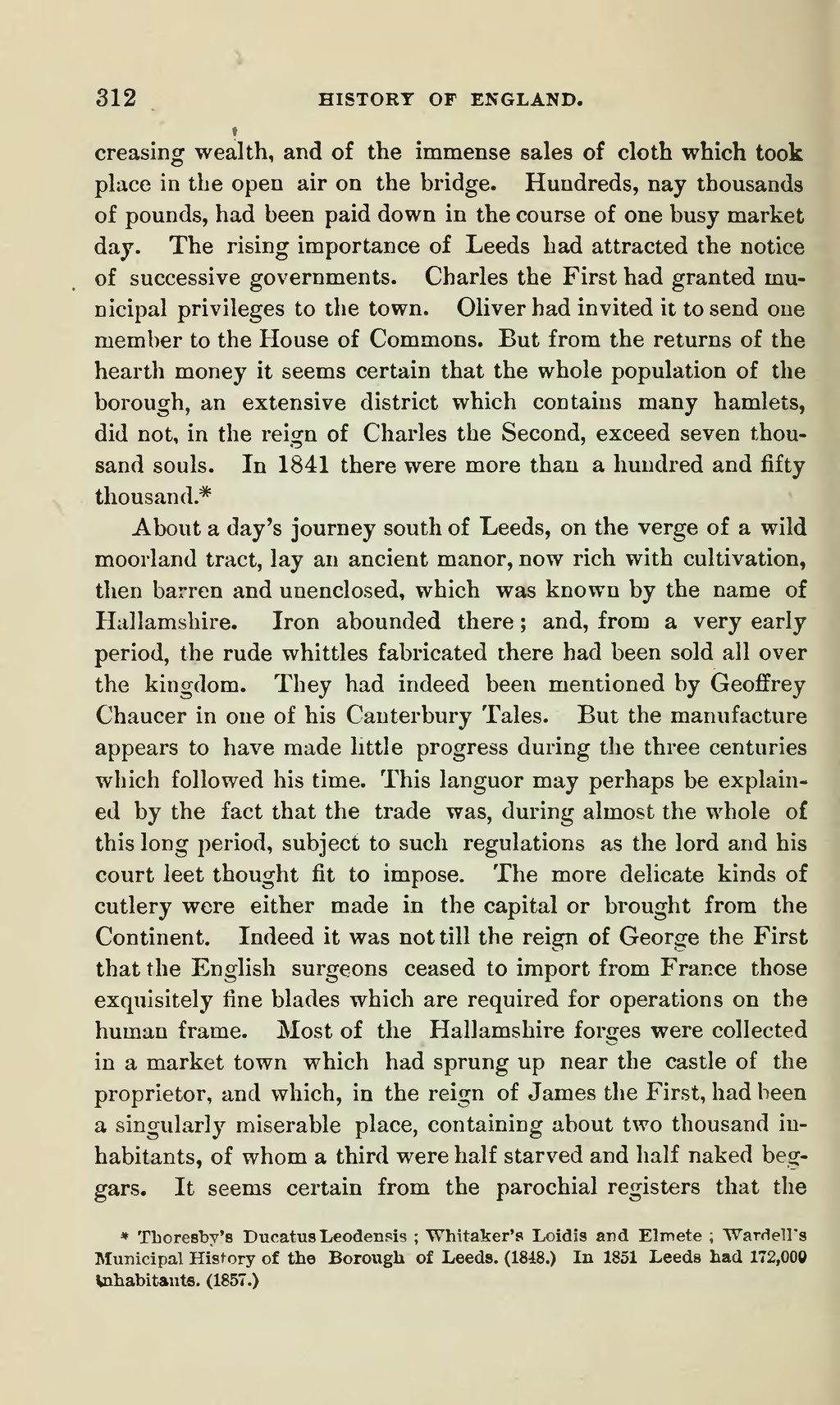creasing wealth, and of the immense sales of cloth which took place in the open air on the bridge. Hundreds, nay thousands of pounds, had been paid down in the course of one busy market day. The rising importance of Leeds had attracted the notice of successive governments. Charles the First had granted municipal privileges to the town. Oliver had invited it to send one member to the House of Commons. But from the returns of the hearth money it seems certain that the whole population of the borough, an extensive district which contains many hamlets, did not, in the reign of Charles the Second, exceed seven thousand souls. In 1841 there were more than a hundred and fifty thousand.[1]
About a day's journey south of Leeds, on the verge of a wild moorland tract, lay an ancient manor, now rich with cultivation, then barren and unenclosed, which was known by the name of Hallamshire. Iron abounded there; and, from a very early period, the rude whittles fabricated there had been sold all over the kingdom. They had indeed been mentioned by Geoffrey Chaucer in one of his Canterbury Tales. But the manufacture appears to have made little progress during the three centuries which followed his time. This languor may perhaps be explained by the fact that the trade was, during almost the whole of this long period, subject to such regulations as the lord and his court leet thought fit to impose. The more delicate kinds of cutlery were either made in the capital or brought from the Continent. Indeed it was not till the reign of George the First that the English surgeons ceased to import from France those exquisitely fine blades which are required for operations on the human frame. Most of the Hallamshire forges were collected in a market town which had sprung up near the castle of the proprietor, and which, in the reign of James the First, had been a singularly miserable place, containing about two thousand inhabitants, of whom a third were half starved and half naked beggars. It seems certain from the parochial registers that the
- ↑ Thoresby's Ducatus Leodensis; Whitaker's Loidis and Elmete; Wardell's Municipal History of the Borough of Leeds. (1848.) In 1851 Leeds had 172,000 Inhabitants. (1857.)
